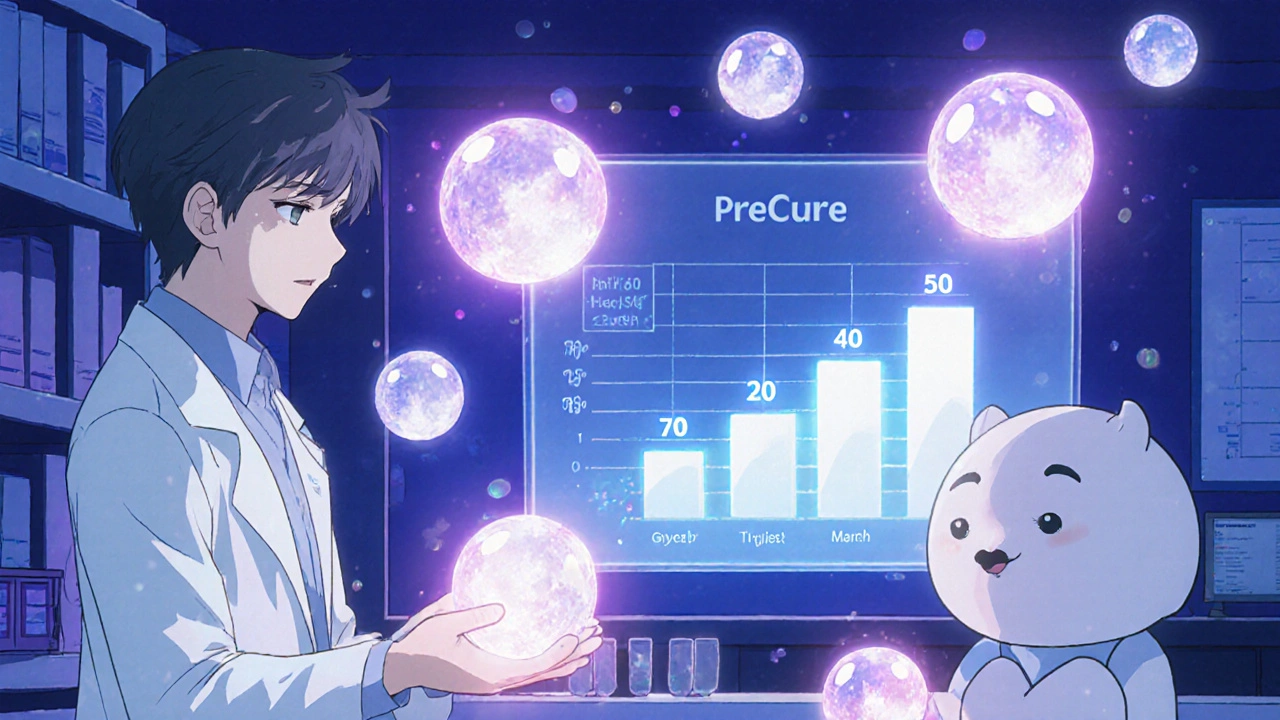Personalized Cancer Monitoring Plan Generator
Personalized Monitoring Plan
Create a tailored cancer recurrence monitoring schedule based on your specific clinical situation. This tool is designed for patients with cancer recurrence history who need immunosuppressive therapy.
Immunosuppressants are drugs that dial down the immune system for conditions such as rheumatoid arthritis, inflammatory bowel disease, and psoriasis. When a patient also carries a cancer recurrence history, the question pops up: does turning off immune surveillance invite the cancer back? The short answer, backed by large meta‑analyses, is that most of the common immunosuppressive regimens do not increase cancer recurrence risk. Still, clinicians and patients need a clear monitoring plan to stay safe.
What the latest evidence tells us
Two big systematic reviews have reshaped the conversation. The 2016 Gastroenterology meta‑analysis pooled 16 studies and 11,702 patients with prior malignancy. Recurrence rates per 1,000 person‑years were virtually identical across four groups: no immunosuppression (37.5), anti‑TNF therapy (33.8), traditional immunomodulators (36.2) and combination regimens (54.5). None of those differences reached statistical significance (p > 0.1).
A follow‑up effort in 2024 doubled the patient pool to 24,382 and added newer biologics and JAK inhibitors. The conclusions were the same: anti‑TNF agents, conventional immunomodulators, and newer biologics (ustekinumab, vedolizumab, JAK inhibitors) showed no excess recurrence risk, whether started earlier or later than five years after the index cancer.
These studies also tossed out the old five‑year waiting rule. Timing-whether you begin therapy at six months or six years-didn’t move the needle on recurrence (p = 0.43). The take‑away? Decisions can be personalized rather than bound by an arbitrary calendar.
How drug classes stack up (quick comparison)
| Therapy class | Typical agents | Recurrence rate | Statistical significance vs. no therapy |
|---|---|---|---|
| No immunosuppression | - | 37.5 | Reference |
| Anti‑TNF | Infliximab, Adalimumab, Etanercept | 33.8 | ns (p > 0.1) |
| Conventional immunomodulators | Methotrexate, Azathioprine, 6‑MP | 36.2 | ns (p > 0.1) |
| Combination (anti‑TNF + IMM) | Anti‑TNF + Methotrexate | 54.5 | ns (p > 0.1) |
| Newer biologics | Ustekinumab, Vedolizumab, JAK inhibitors | ≈30‑35 (trend lower) | ns (p > 0.1) |
Numbers are close enough that the choice of drug should be driven by disease control, side‑effect profile, and patient preference-not fear of cancer returning.

Key factors to weigh before restarting or intensifying therapy
- Cancer type and stage: Melanoma and hematologic malignancies may behave differently because they rely heavily on immune surveillance.
- Time since remission: Although the data show no timing effect, most clinicians still feel more comfortable after a clear remission period (often >1 year).
- Severity of the autoimmune disease: Uncontrolled rheumatologic or gastrointestinal inflammation carries its own morbidity and mortality, sometimes outweighing theoretical recurrence risk.
- Patient age and comorbidities: Older patients may need gentler regimens and closer surveillance.
- Previous treatment history: Prior exposure to high‑dose chemotherapy or radiation can influence organ reserve and thus drug choice.
When you line these factors up, you get a tailored risk-benefit profile rather than a one‑size‑fits‑all rule.
Building a practical monitoring plan
Even with reassuring data, proactive follow‑up is essential. Here’s a simple schedule you can adapt:
- Baseline assessment: Before re‑starting any immunosuppressant, obtain a full cancer work‑up-imaging (CT, MRI, or PET as appropriate), tumor markers, and a review of pathology reports.
- First 12 months: Schedule clinical visits every 3 months. Perform imaging at 6‑month intervals for cancers with high recurrence rates (e.g., colorectal, breast).
- Beyond year 1: Move to every 6 months if the patient stays disease‑free. Annual imaging is usually enough for most solid tumors.
- Laboratory monitoring: CBC, liver function, and inflammatory markers (CRP, ESR) at each visit to flag both disease flare and possible malignancy signs.
- Patient‑reported symptoms: Encourage patients to call early for new pain, unexplained weight loss, or night sweats.
Documenting the schedule in the electronic health record and sharing it with the patient helps keep everyone on the same page.

Decision checklist for clinicians and patients
- Has the cancer been in remission for at least 12 months?
- Is the autoimmune disease uncontrolled without immunosuppression?
- Which drug class offers the best disease control with the lowest side‑effect burden for this patient?
- Do we have a baseline imaging set and tumor markers?
- Is the patient comfortable with the proposed monitoring frequency?
If the answer to most of these is “yes,” restarting therapy is reasonable. If you’re unsure, consider enrolling the patient in a prospective study like the RECOVER trial (NCT04567821) or the RHEUM‑CARE cohort (NCT04321987) to contribute to the growing evidence base.
Frequently Asked Questions
Can anti‑TNF agents cause cancer to come back?
Large pooled analyses covering more than 24,000 patients show no statistically significant increase in recurrence risk with anti‑TNF drugs such as infliximab, adalimumab, or etanercept.
Do newer biologics like ustekinumab carry extra risk?
The 2024 meta‑analysis included ustekinumab, vedolizumab and JAK inhibitors and found trends toward lower recurrence rates, though differences were not statistically significant. They appear as safe as older agents.
Is there a safe waiting period after cancer treatment?
Current evidence suggests that starting immunosuppression before or after five years does not change recurrence risk. The decision should be based on disease activity and patient preferences rather than a fixed timeline.
What monitoring tests are essential?
Baseline imaging (CT/MRI/PET), tumor markers specific to the prior cancer, complete blood count, liver function tests, and regular symptom review are the core components.
Should I enroll my patient in a study?
If uncertainty remains, trials like RECOVER (IBD focus) or RHEUM‑CARE (RA focus) offer structured follow‑up and contribute valuable data to guide future care.
Bottom line: the fear that immunosuppressants inevitably fuel a cancer comeback is no longer supported by high‑quality data. By using a personalized risk assessment and a disciplined monitoring plan, patients can stay on the therapies they need without compromising their oncologic safety.



Jacqueline Galvan
October 24, 2025 AT 13:23Establishing a solid baseline before any immunosuppressive therapy is essential; it allows clinicians to compare future imaging and laboratory values with a known reference point. A full cancer work‑up-CT, MRI, or PET as indicated-combined with relevant tumor markers provides the necessary snapshot. Additionally, reviewing the pathology report helps verify disease‑free margins and informs risk stratification. With this groundwork in place, patients and providers can proceed with confidence while maintaining vigilance.
Tammy Watkins
October 25, 2025 AT 15:46When designing a monitoring schedule for patients with a history of malignancy who require immunosuppression, one must first delineate the oncologic risk profile, including cancer type, stage at initial diagnosis, and any residual disease markers. Next, the timing of therapy initiation should be aligned with the patient’s remission interval, though evidence shows that the exact number of months does not materially influence recurrence statistics. The baseline assessment, as noted, must encompass high‑resolution imaging tailored to the primary tumor’s typical metastatic patterns, such as contrast‑enhanced CT for colorectal cancer or whole‑body PET for lymphoma. In parallel, serum biomarkers-CEA for colorectal, CA‑125 for ovarian, PSA for prostate-should be obtained and trended at each visit. Clinical encounters are then structured at three‑month intervals during the first year, permitting both disease activity checks and early detection of oncologic signals. At the six‑month mark, repeat imaging is recommended for high‑risk cancers, while low‑risk entities may defer until the twelve‑month interval. After the inaugural year, the cadence can be safely extended to biannual visits, provided the patient remains asymptomatic and imaging remains unchanged. Annual imaging suffices for most solid tumors, yet aggressive histologies such as melanoma or triple‑negative breast cancer warrant more frequent surveillance. Laboratory monitoring, including CBC, liver function panels, and inflammatory markers like CRP, should be performed at every encounter to capture drug toxicity and subtle shifts suggestive of neoplastic activity. Patient‑reported outcomes are invaluable; any new unexplained weight loss, night sweats, or persistent pain must trigger an expedited work‑up. Documentation of this protocol in the electronic health record, with alerts for upcoming scans, enhances adherence and ensures multidisciplinary coordination. Moreover, involving the patient in shared decision‑making fosters adherence to the monitoring plan, as they understand the rationale behind each test. Should uncertainty persist, enrollment in prospective registries such as RECOVER or RHEUM‑CARE offers structured oversight and contributes to the evidence base. Finally, clinicians must remain agile, adapting the plan if new therapeutic agents emerge or if the patient’s comorbidities evolve. By adhering to this comprehensive, data‑driven framework, the risk of cancer recurrence can be minimized while the benefits of immunosuppression are fully realized.
Dawn Bengel
October 26, 2025 AT 18:33If you think the pharma lobby isn’t steering drug approvals for profit, you’re living in a fantasy 😂
Dason Avery
October 27, 2025 AT 22:20While the data reassure us that immunosuppressants don’t markedly raise recurrence odds, the psychological burden on patients can be substantial. Many individuals wrestle with the paradox of dampening an overactive immune system while fearing that the same shield keeps cancer at bay. It helps to frame the decision in terms of risk tolerance rather than absolute safety. By quantifying the incremental risk-often less than one percent per year-clinicians can contextualize it against the morbidity of uncontrolled autoimmunity. Open dialogue, grounded in empathy, often eases the existential dread that accompanies these choices. Ultimately, a balanced approach nurtures both physical and emotional well‑being.
HILDA GONZALEZ SARAVIA
October 29, 2025 AT 02:06Selecting the appropriate drug class should hinge on disease severity, side‑effect profile, and patient lifestyle. For instance, anti‑TNF agents provide rapid control in severe Crohn’s disease but may require injections every two weeks. Conventional immunomodulators like methotrexate are oral and cost‑effective but demand regular lab monitoring. Newer biologics offer targeted mechanisms with potentially lower infection risk, yet long‑term data remain limited. Discussing these nuances with patients empowers shared decision‑making and aligns treatment with individual priorities.
Marilyn Pientka
October 30, 2025 AT 05:53From a etiopathogenic standpoint, the immunomodulatory cascade induced by calcineurin inhibition must be scrutinized against oncogenic neoantigen surveillance pathways. Empirical evidence indicates that the pharmacodynamic attenuation of T‑cell cytotoxicity does not translate into statistically significant oncogenic potentiation, a conclusion corroborated by multivariate Cox regression analyses across heterogeneous cohorts. Nevertheless, the lexicon of “risk” is frequently obfuscated by industry‑driven narratives that conflate correlation with causation. The oncologic community should therefore adopt a rigorously stratified risk matrix, incorporating variables such as tumorigenic index, immunophenotypic markers, and prior exposure to cytotoxic regimens. Moreover, the pharmacokinetic half‑life differentials among monoclonal antibodies necessitate individualized dosing intervals to mitigate inadvertent immunosuppressive nadirs. When juxtaposing the therapeutic index of anti‑TNF agents versus Janus kinase inhibitors, one must acknowledge the divergent intracellular signaling perturbations-NF‑κB versus JAK‑STAT pathways-and their respective ramifications on tumor immunosurveillance. A thorough appraisal also demands consideration of epigenetic modifiers, as emerging data suggest that histone deacetylase inhibition may synergize with immunosuppressants to modulate oncogenic transcriptional programs. Consequently, clinicians are ethically obligated to transcend simplistic “one‑size‑fits‑all” heuristics and engage in a dialectic synthesis of molecular pathology, patient comorbidities, and quality‑of‑life metrics. In practice, this translates to constructing a bespoke surveillance algorithm, integrating serial positron emission tomography, liquid biopsy assays for circulating tumor DNA, and longitudinal immunophenotyping. Failure to operationalize such a comprehensive framework not only undermines evidence‑based medicine but also perpetuates the moral hazard of complacent clinical stewardship. Ultimately, the paramount objective remains the preservation of oncologic remission while delivering optimal control of autoimmune pathology, a balance attainable only through meticulous, data‑driven stratification. Furthermore, cost‑effectiveness analyses reveal that judicious monitoring can offset the financial burden of high‑expense biologics. Interdisciplinary tumor boards should review each case quarterly to reassess risk thresholds. Patient‑reported outcome measures (PROMs) must be integrated into the algorithm to capture subtle symptomatology preceding radiographic changes. By institutionalizing these comprehensive safeguards, the medical enterprise upholds both scientific rigor and fiduciary responsibility.
Carla Taylor
October 31, 2025 AT 09:40Just keep the check‑ups on schedule you’ll be fine. A quick scan every six months does the trick.
Kathryn Rude
November 1, 2025 AT 13:26Reality check these schedules aren’t just bureaucratic fluff they actually catch recurrences early 😊 they also give patients peace of mind knowing something’s being watched
Lindy Hadebe
November 2, 2025 AT 17:13The monitoring plan is thorough but perhaps overly detailed for low‑risk patients. Simplifying the imaging frequency could reduce healthcare costs without compromising safety. A tiered approach based on initial cancer stage might be more pragmatic.
Ekeh Lynda
November 3, 2025 AT 21:00While I acknowledge the intention behind a comprehensive surveillance protocol, the reality is that most clinicians have limited time and resources. Patients often experience follow‑up fatigue. The literature shows that for indolent cancers such as early‑stage colorectal disease, the probability of detecting a clinically significant recurrence after the first year drops dramatically. Yet guidelines still advocate annual scans, which adds financial strain and radiation exposure. Moreover, the psychological toll of repeated imaging cannot be ignored. Patients report increased anxiety with each appointment. This anxiety can negatively impact adherence to their primary autoimmune therapy. The solution, in my view, lies in stratifying patients, not just by cancer type but by a composite risk score. This score should include age, comorbidities, prior treatment intensity and biomarkers. A low‑risk cohort could safely transition to symptom‑triggered imaging. High‑risk individuals would maintain the current schedule. Additionally, integrating liquid biopsies could provide a minimally invasive early warning system. This approach would reduce the need for costly whole‑body scans in many cases. Implementing such a framework requires interdisciplinary collaboration among oncologists, rheumatologists, and primary care providers. Finally, healthcare systems should incentivize personalized monitoring pathways rather than a one‑size‑fits‑all model to promote sustainability and patient‑centered care.